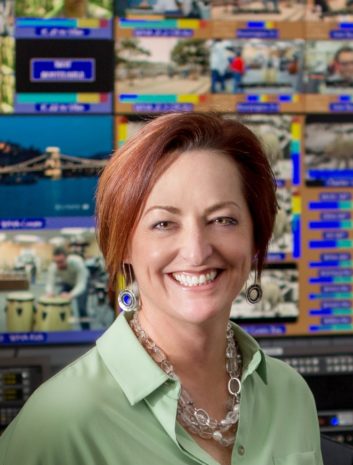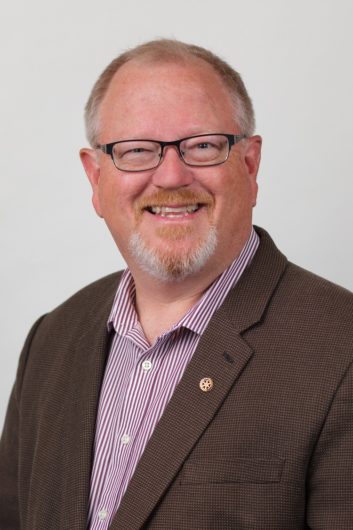In October, Wisconsin Public Radio and the state agency that manages stations that carry WPR programming announced they were reducing their use of HD Radio.
They posted an announcement explaining the decision. They noted that their use of HD Radio dated to 2007 and that WPR and the Wisconsin Educational Communications Board had installed 13 HD Radio transmitters carrying existing WPR content that also allowed WPR to broadcast its All Classical network on HD2 multicasts.
“Beginning Monday, Oct. 19 the ECB … will turn off HD Radio broadcasts on seven of WPR’s 13 HD-capable stations,” they announced. Those are licensed to the communities of Superior, Brule-Superior, Ashland, Park Falls, Menomonie-Eau Claire, Adams-Wisconsin Rapids and Sister Bay.
The organization will continue to operate HD Radio “for now” on stations serving Delafield-Milwaukee, Madison, Highland, La Crosse, Wausau and Green Bay.
“WPR and the ECB received federal grants to install HD Radio technology, but the costs of maintaining the service statewide are no longer justifiable based on audience use,” they wrote.
The audience in question is the one listening to multicasts. ECB Executive Director Marta Bechtol estimated that fewer than 500 listeners would be affected and noted that the classical network continues online and via apps and smart speakers. She also emphasized to the public that WPR service on “their usual FM and AM stations” would not be affected.
“HD Radio was launched nationally in 2002 with a promise to provide higher-quality, digital audio to radio listeners. Stations purchased new equipment to broadcast HD Radio and listeners were required to purchase new radios to pick up the signals,” the announcement continued.
“While many stations, like WPR, invested in the new technology, few consumers purchased the radios, which have become difficult to find. Despite some benefits, HD Radio has failed to attract enough listeners to offer a sustainable alternative to FM or even AM analog radio for many broadcasters.”
We reached out to Bechtol and WPR Director Mike Crane for more insight.
Radio World: Can you expand on the thinking that went into this decision, given the time and money that had been invested in it?

Marta Bechtol: The Wisconsin Educational Communications Board, which holds the licenses for these stations, is an agency of the State of Wisconsin, and receives approximately 30% of its annual operating funds from the state. The agency has been issued a fiscal year budget lapse ($245,000) due to the economic effects of COVID-19, so tough decisions had to be made. This action will help keep future capital costs down as well.
RW: The seven stations are turning off HD-1 digital radio service and associated multicasts?
Bechtol: All of these are multicast services. The analog/digital mix of HD-1 and the all-digital HD-2 are being turned off.
Mike Crane: All had HD-2 signals delivering an All Classical feed. We do have several HD-3 services on the remaining transmitters, used either to deliver signal to another transmitter as a form of STL, or because limited local analog service for one of our two networks suggests that we should leave them on for the time being.
RW: The announcement quotes Mike saying “the resources we were spending to maintain HD Radio will be redirected to sustain other services that audiences clearly prefer.” Can you expand on which aspects of the operation created costs that can be saved?
Bechtol: We expect to see a reduction in utilities and maintenance costs, an extension of transmitter life, and ease in demands on our technical staff that travel good distances to maintain these facilities.
RW: Mike what specifically will now be turned off?

Crane: Importers and exporters that are external to the transmitters. Transmitter exciters were changed by internal setting of FM/HD to FM-only. HD2 audio streams are disconnected to save bandwidth at transmitter sites.
RW: How much do you expect to save?
Bechtol: We’ll see the bulk of savings in our transmitter replacement costs — size, tube life, HD-specific gear, etc. — which are on the immediate horizon. We expect to save around $65,000 in utilities, an estimated 20% decrease in our annual utility costs. (Our average analog-only efficiency is 72%, and our average HD-Hybrid efficiency is 57%, so we’ll see a 15% efficiency increase.) There will also be a small amount of savings related to HVAC/cooling. Additionally, this will save time and money in maintenance costs and relieve workload burdens on our technical staff.
RW: The announcement quotes Marta as saying, “It’s possible that some FM listeners will experience an improved signal quality due to reduced interference from our HD broadcasts.” How would you characterize any interference complaints?
Crane: These HD signals were activated a long time ago, and we don’t have a record of interference complaints from that time, nor have we received any notable complaints recently. The idea that some listeners may get better reception is just based on what we know about the effect of the HD sidebands on the analog signal.
RW: You estimated that fewer than 500 listeners will be affected; how do you determine that number?
Crane: Based on the Nielsen ratings, we generally do not see any reported listening to the HD-2 signals in question. But anecdotal evidence from listener comments over the years suggests that we do have a few who tuned in.
RW: The announcement noted that radios have become difficult to find; but advocates for HD Radio cite a growing presence in cars.
Crane: There are still a lot of cars that don’t have HD, and some implementations leave a lot to be desired. And with the current emphasis on Apple CarPlay and Android Auto, as well as on smart speaker listening, we believe focusing on our streams makes more sense.
RW: An argument made by advocates has been that HD Radio and other digital formats bring more capabilities for metadata including visual elements important in the dash. Does WPR deploy visuals like Artist Experience or other metadata-based services?
Crane: We do deliver some metadata, and are eager to add more as we upgrade our systems. We currently deliver RDS data on the FMs and remaining HDs through Center Stage, which we hope to retire someday in favor of something newer like Artist Experience. We are not currently using other platforms for expanded HD metadata.
RW: What would you tell an industry colleague who was thinking of exploring HD Radio at this point?
Crane: There are certainly specific reasons to add HD service in some circumstances. But consumer uptake has been disappointing for a very long time, and we think streaming to smart speakers and to cars is the future. Additionally, few radio station owners invested in it, at least in Wisconsin: In some markets WPR has been the only HD signal for many years.
RW: Your announcement for the general public generally treats the reduction of service as being about the end of certain multicasts. Presumably some listeners were hearing the HD1 too.
Bechtol: Multicast was always the most exciting part for us.
RW: What else should we know about your experience with HD Radio?
Crane: It has helped us develop our All Classical network (the NPR News & Music Network is a mix of news and classical). But in the absence of special funding like we received from the Corporation for Public Broadcasting, HD has become less sustainable.
RW: On another topic, hybrid radio services seem to be on the uptick. What if anything is WPR planning in regard to hybrid radio?
Crane: We’re certainly intrigued, and are following the news as it develops.











